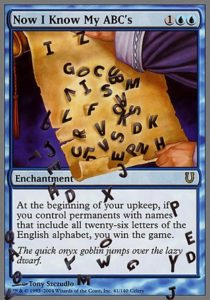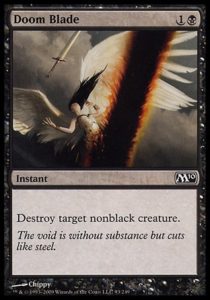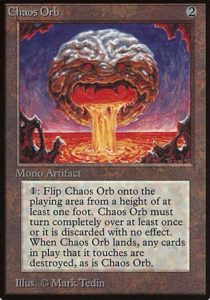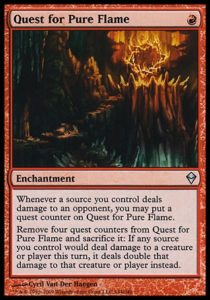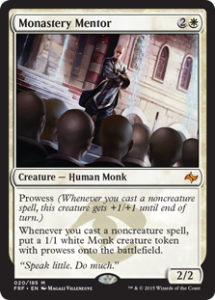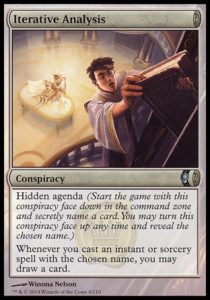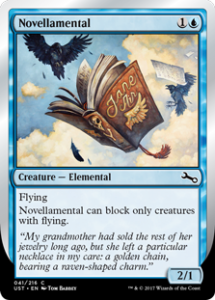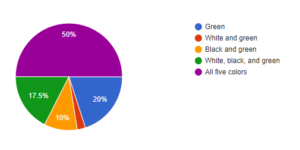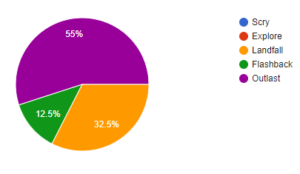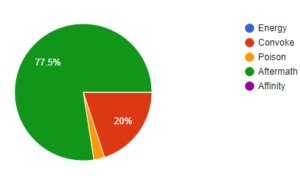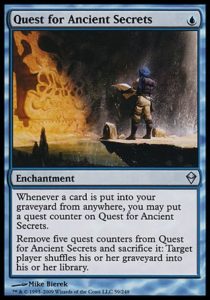Welcome back to Great Designer Training, where we help you prepare for the third Great Designer Search! After this article, we’ll be halfway to the initial test. Crazy how time flies, eh?
Before jumping into this week’s questions and then proceeding to last week’s answers, I’d like to offer my heartfelt thanks to the community. I am honored that so many folks have submitted their ideas, feedback, and critiques. I’ll do my best to accommodate all the suggestions I’ve received and continue providing interesting challenges.
That said, let’s get cracking, ’cause there’s a lot of ground to cover! Here’s the link to answer this week’s questions, which you’ll see below.
Callback Assignment: GDS#1 Question 2
This is the third-most incorrectly answered question from GDS1. It poses a simple question: do you know appropriate rarity costing? As you read this question from eleven years ago (before mythic rarity existed), consider whether the answer might have changed in the interim.
Mighty Giant
???
Creature – Giant
5/5
Whenever CARDNAME attacks, three target creatures can’t block this turn.
#2) What is the most appropriate rarity for the above card?
a) common
b) uncommon
c) rare
Research Assignment: Rarity Shifting
While we’re on the subject of appropriate rarity, we’ve seen reprinted cards often change rarity across printings. There are several reasons why this happens and I’d like you to consider them.
For this assignment, please select three cards that have been printed at different rarities and explain why you think their rarities changed. Ideally, each will have a different reason for why it was rarity-shifted.
GDS-esque Questions
Question #1: Consider the following card:
Hornet Stinger
3G
Instant
Hornet Stinger can’t be countered.
Hornet Stinger deals 4 damage to target creature with flying or player.
What is R&D most likely going to change about this card?
a) The name
b) The color
c) The type
d) The first ability
e) The second ability
(I happily admit I got the inspiration for this design from this tricky question from Jay Treat. If you’re not reading his excellent design tests at Goblin Artisans, well, stop not doing that!)
Question #2: Questions 2-4 relate to the following card. (For reference, M means 1 mana of an unspecified color.)
Fighty Person
4M
Creature—Elemental
Prowess
2/5
What is the most appropriate rarity for this card?
a) Common
b) Uncommon
c) Rare
d) Mythic rare
Question #3: What is the most likely color for this card?
a) White
b) Blue
c) Black
d) Red
e) Green
Question #4: If this card were given a second ability, what could it receive and not remain monocolor?
a) Lifelink
b) Hexproof
c) Double-Strike
d) Reach
e) Deathtouch
Question #5: Which of the following Coldsnap mechanics is most likely to appear in Standard?
a) Ripple
b) Delayed cantrips
c) Cumulative upkeep
d) Snow mana
e) Recover
Design Challenge
1: The Keyword Remix
Design a card that contains two existing keywords that have not yet been on a card together.
2: The Keyword Action Remix
Design a card that contains an existing keyword action and an existing keyword. (Hint: you should probably research the difference between these two things.)
3: An Enemy Alternate
Suppose Dragons of Tarkir’s story went a little bit differently. Design a mythic rare enemy-colored Dragonlord.
4: Planeswalker’s Ally
Design an uncommon creature that references or interacts with an existing planeswalker to appear in an upcoming Core Set.
5: A Guildmage for a New Age
Design an uncommon guildmage for a new Ravnica set.
Happy Designing!
You can submit all of your responses here. And now, let’s get to last week’s questions!
Research Assignment: Unkeyworded Keywords and Unnamed Ability Words
Astute readers noted that ability words are far more frequently revisited than keywords. Tireless Tracker, Zendikar’s Roil, Courser of Kruphix, and Architect of the Untamed all have Landfall. Morbid reappears on Emissary of the Sleepless, Life Goes On, and Bone Picker. Arguel`s Blood Fast has Fateful Hour, Legion`s Landing basically has Battalion, and Dr. Julius Jumblemorph is basically a changeling, to cite a few examples.
I was totally cool with folks noting recognizable twists on abilities, like Bane of Bala Ged (Annihilator), Aetherflux Reservoir (Storm), and Disciple of Deceit (Transmute).
Some folks found keywords like Battle Cry on Honored Crop-Captain and a modified Awaken on Waker of the Wilds. We even had a couple folks find the keyword action Detain in Edifice of Authority. Great work, everyone!
The only thing I saw multiple people list incorrectly reference was Rampage (which makes sense, since Rampage has been retired a very long time for good reason). Rampage works only if a creature is blocked multiple times (and only for each blocker beyond the first), not for each blocker. I don’t expect this to be a major concern for GDS3, but encourage folks to not assume they remember how every mechanic works. You’ll have the ability to do research for the real tests, so why not get some of that research done in the practice stage?
Callback Assignment: GDS#2 Question 6
6) Design often makes creatures that have flash and “enters the battlefield” triggered abilities like Deflecting Mage. Which of the following abilities would we least likely pair with flash?
a) Counter target spell.
b) The next time target instant or sorcery spell would deal damage, it deals double that damage instead.
c) CARDNAME deals 2 damage to target attacking or blocking creature.
d) Prevent all combat damage that would be dealt this turn.
e) Target creature gets +3/+3 until end of turn.
Rosewater has gone on record to say that this question was unintentionally poorly worded. So, we can likely expect fewer trick questions like this (that rely on unusual phrasing) and more trick questions of other sorts.
The correct answer is E. The reason is simple: this is the only ability of the five that functions at sorcery speed. But yes, B is really complicated and not something we see often.
GDS-esque Questions
Question #1: Which colors are able to “tutor” (search their library for a card and put it into their hand) for a basic land?
a) Green
b) White and green
c) Black and green
d) White, black, and green
e) All five colors
This question was asking you to do one thing: check the Mechanical Color Pie. Green is the master of tutoring for lands, but every color has access to it. Not only do other colors dabble in this on visible cards (Liliana of the Dark Realms, Knight of the White Orchid), but every color gets access to at least its own land types and occasionally fixing for all colors (Chartooth Cougar, Igneous Pouncer, Traumatic Visions, Merfolk Wayfinder).
Question #2: R&D makes sure that each limited environment has one or more mechanics that help gameplay to ensure better consistency and/or smooth mana bases. Which of the following mechanics least meets this need? (Writer’s note: you may recognize this text. It’s copied from GDS1. The answers, however, are not.)
a) Scry
b) Explore
c) Landfall
d) Flashback
e) Outlast
I expected this to be a contentious question. Outlast and Landfall aren’t commonly thought of as smoothing mechanics and you had to decide which of the two is worse at that task. Honestly, I’m not 100% confident in my answer, but I expect there to be GDS3 questions I’m not certain of, either. Hopefully this one stirs some debate. Anyhoo, here’s my reasoning.
Scry and Explore are smoothing mechanics. They help you find lands when you need them and get them off your deck when you need action. Flashback isn’t as much of a smoothing mechanic, but it does a similar thing to Kicker (which was listed as a smoothing mechanic in GDS1) in giving you an additional effect when you have more mana. Moreover, many recent Flashback (and Aftermath) cards are inexpensive and have quite expensive flashback costs, so they tend to give you options both early and late.
And now, the contentious two remain. Neither Outlast nor Landfall interact with your library, so they’re not overt smoothing mechanics like landcycling or cantrips. Both encourage you to play more lands, which can mitigate mana screw. Outlast gives players something to do with their mana at all stages of the game (if you’re short on lands, you can at least use your mana to Outlast a creature, and if you’re flooding out, you can Outlast all of your stuff), giving players something to do. Landfall gives players slightly more live draws in the late game (since lands at least trigger Landfall), but it can encourage players to withold land drops, potentially hurting them. I think Outlast does something to help smooth out players’ draws (both when they’re mana screwed and mana flooded), whereas Landfall slightly discourages players from having smooth draws and does nothing when you’re mana light.
Question #3: Which of the following is NOT an example of a parasitic mechanic?
a) Energy
b) Convoke
c) Poison
d) Aftermath
e) Affinity
This was another straightforward question (with a small twist). First, do you know what a parasitic mechanic is and what a modular mechanic is? Second, can you perceive which of two modular mechanics is more modular?
Energy, Poison, and Affinity are all parasitic—if you have cards with them in your deck, you are rewarded for putting more such cards (and enablers) in your deck. Aftermath and Convoke are modular mechanics—they don’t contort your deckbuilding… much.
The difference between Aftermath and Convoke is that Convoke is more parasitic. If you put a Convoke card in your deck, you are rewarded for playing more creatures (particularly cheap creatures and token producers), which then makes your Convoke cards better, which rewards you for playing more of them. Convoke doesn’t have a very strong feedback loop, but it does have one. Aftermath, on the other hand, doesn’t reward you for much other than putting lands in your deck (though yes, it rewards self-mill a smidgen).
The only remaining thing to attend to is last week’s design challenge. For the sake of brevity (as this article is already running rather long), I’m going to save that for Thursday. That’s right, there’s so much content for today, I’m splitting it up among two articles!
Hope you’re enjoying this journey to the starting line at least a fraction as much as I am. I am incredibly excited to compete in GDS3 and am overwhelmed by the community’s response to these articles (not to mention the raw amount of talent I’ll get to compete with and am training alongside). No matter what happens, I’m delighted to see such talented new minds designing Magic cards on the most public stage there is.
And, as always, thanks for reading.
—Zachary Barash
Zachary Barash is a New York City-based game designer. He works for Kingdom Death: Monster, has an MFA in Game Design from NYU, and does freelance game design. Also, when the stars align, he streams.
His favorite card of the month is Explore, his favorite Magic card design ever. It’s so beautifully efficient. It imparts a knowledge and perhaps introduces you to a new land, just like exploration does. It’s powerful, but fair, and yet it’s also kind of Time Walk for the exact same mana cost.

